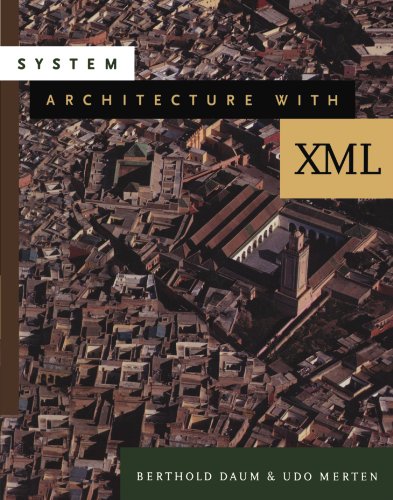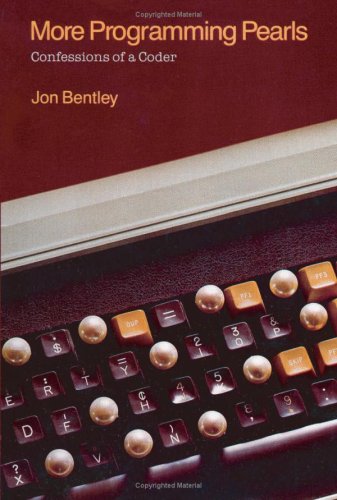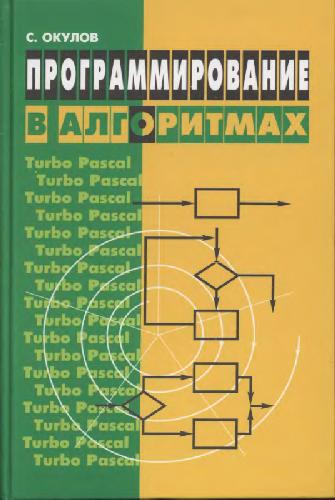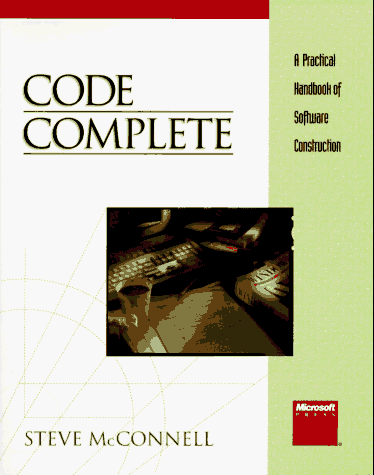Berthold Daum, Udo Merten1558607455, 9781558607453, 9780585448213
Table of contents :
Header……Page 1
Table of Contents……Page 2
System Architecture with XML……Page 8
Foreword……Page 10
Preface……Page 11
About This Book……Page 13
Acknowledgments……Page 14
1.1.1 The Nonplanned Settlement……Page 16
1.1.2 TopologyŠTransactional, Relational, Navigational……Page 18
1.1.3 Babel……Page 19
1.1.4 Subcultures and Ontologies……Page 20
1.1.5 Challenges……Page 22
1.2.1 The Blurring of the Classical Application……Page 24
1.2.4 Soft Logic……Page 25
1.3.1 Dwellings……Page 26
1.3.2 Community Infrastructure……Page 31
1.4 Best Practices……Page 34
2.1 XML: A Language Factory……Page 35
2.2.1 The Syntax……Page 36
2.2.2 The XML Information Model……Page 41
2.3.1 The Document Type Definition (DTD)……Page 43
2.3.2 Advanced Topics……Page 45
2.4.1 DTD Deficiencies……Page 46
2.4.2 XML Schema……Page 47
2.5 Access and Composition……Page 56
2.5.1 XPath……Page 57
2.5.2 XPointer……Page 60
2.5.3 XInclude……Page 61
2.6 Querying XML……Page 62
2.6.1 Expression Types……Page 63
2.7 XSL (Extensible Stylesheet Language)……Page 66
2.8.1 SAX……Page 67
2.8.2 DOM……Page 68
2.9 Schema DefinitionŠStage 3……Page 69
2.9.1 A Feather Duster for XML Schemata……Page 70
2.9.2 Elements Versus Attributes……Page 71
2.9.3 XML Design Patterns……Page 74
2.9.4 Architectural Forms……Page 76
2.10.3 Multipart Schemata?……Page 78
2.10.8 Adopt a Concise Style for Schema Design……Page 79
2.10.9 Do Not Use Exotic Language Elements……Page 80
2.11 XML Resources……Page 81
3.1 The Evolution of Data Models……Page 82
3.1.1 CODASYL……Page 83
3.1.3 Relational Databases……Page 85
3.1.4 Navigational Architectures……Page 89
3.2.1 The Entity Relationship Model……Page 93
3.2.2 Asset-Oriented Modeling (AOM)……Page 100
3.2.3 A Document-Centered Step-by-Step Approach……Page 104
3.2.4 Smash the Enterprise Data Model?……Page 118
3.2.5 Best Practices……Page 119
3.3.1 RDF Basics……Page 120
3.3.2 From ERM to RDF……Page 124
3.3.3 Advanced Modeling Techniques……Page 127
3.3.4 Reification……Page 132
3.3.5 RDF Schema……Page 134
3.3.6 Reasoning with RDF……Page 137
3.4.1 XML Modeling with UML……Page 139
3.4.2 XMI: Exchange Format for Model Data……Page 144
4.1 Formal Semantics……Page 147
4.1.1 Formal Semantics and Constraints……Page 148
4.1.2 Constraints in Schema Definitions……Page 149
4.2 Ontologies……Page 150
4.2.1 Ontological Depth……Page 151
4.2.2 Operational Ontologies: DAML and OIL……Page 155
4.3 Philosophical Excursus……Page 158
4.4 Context……Page 159
4.4.1 Ontologies and Contexts……Page 160
4.4.2 Binding to Contexts: Schema Adjunct……Page 162
5.1.1 Overview of Process Paradigms……Page 165
5.1.2 Notion of Workflows and Modeling……Page 166
5.1.3 Metamodeling Aspects……Page 168
5.2.1 Background……Page 169
5.2.2 What Is a Business Process?……Page 171
5.2.3 Employing Formal Modeling……Page 174
5.2.4 A Business-Centered Modeling Approach……Page 180
5.3 Communication and Cooperation: Toward Agent-Based Systems……Page 182
5.3.1 The Notion of Agent-Based Systems……Page 183
5.3.2 Typology and Applications of Agents……Page 184
5.3.3 Agent-Oriented Concepts……Page 185
5.3.4 ADEPT……Page 187
5.4.1 Actor-Driven Processes……Page 189
5.4.2 Open Communication Processes……Page 190
5.4.3 Contract-Based Interaction with tpaML……Page 191
5.4.4 Self-Modifying Processes……Page 192
5.4.5 The Business Process Management Initiative (BPMI)……Page 193
5.4.6 Business Rules……Page 195
5.5 Concluding Remarks……Page 199
6.1 History……Page 201
6.2 Layers of Communication……Page 202
6.3 Channels and Ports……Page 204
6.4 Speech Acts……Page 205
6.5.1 Simple and Complex Messages……Page 206
6.5.2 SOAP……Page 207
6.6.1 ACID Transactions……Page 210
6.6.3 The Web Services Description Language (WSDL)……Page 211
6.8 Security……Page 215
6.8.1 Basics……Page 216
6.8.3 XML Signature……Page 217
6.8.4 XML Encryption……Page 218
7.1.1 A Short History of Hypermedia……Page 220
7.1.2 Hypermedia Navigation……Page 221
7.2 topic maps……Page 232
7.2.1 A GPS for the Web……Page 233
7.2.2 Another Philosophical Excursus……Page 242
7.2.3 Topic Maps versus RDF……Page 243
7.3 Directory Services (UDDI)……Page 244
7.4 Peer-to-Peer Architectures……Page 247
8.1.1 Results from Multimedia Research……Page 249
8.1.2 Dimensions of Multimedia Composition……Page 251
8.1.4 Multimedia Data Models……Page 254
8.2.1 Overview of Viewing XML Data……Page 257
8.2.2 HTML……Page 258
8.2.3 XHTML……Page 260
8.2.4 Formatting Objects with XSL……Page 263
8.3.1 Concepts of XForms……Page 267
8.3.2 Implementations……Page 269
8.4.1 What Is WAP?……Page 270
8.4.2 WML……Page 272
8.4.4 WBXML……Page 273
8.5.1 SMIL……Page 274
8.5.2 SVG……Page 278
8.5.3 VoiceXML……Page 279
8.6.1 PDF……Page 282
8.6.2 (La)TeX……Page 283
Overview……Page 285
9.1 Procedural Transformation……Page 286
9.2 Rule-Based Transformation……Page 287
9.3.1 Variables……Page 289
9.3.5 Metatransformations……Page 290
9.4 What XSLT Can™t Do……Page 291
9.5 Extensions……Page 292
9.7 Performance Aspects……Page 294
9.8 Other Languages……Page 295
9.8.3 XDuce……Page 296
9.9 Generating Web Pages……Page 297
10.1 Business Requirements……Page 299
10.2 Web Services……Page 300
10.2.3 Collaboration Instead of Integration……Page 301
10.2.6 Service Localization……Page 302
10.3.1 Basic Concepts……Page 303
10.3.2 Shared Repositories……Page 304
10.3.3 Contracts in ebXML……Page 309
10.3.4 The ebXML Process Model……Page 310
10.3.5 How Context Is Handled……Page 314
10.4.1 Technical Vocabularies……Page 317
10.4.4 Vertical Industry Vocabularies……Page 318
11.1.1 Conceptual Design……Page 320
11.1.2 Process Design……Page 321
11.1.3 Schema Design……Page 322
11.2 Database Systems……Page 323
11.2.1 Mapped Systems……Page 324
11.2.2 Native Systems……Page 326
11.2.3 Best Practices……Page 327
11.3.1 e-speak……Page 328
11.3.2 RosettaNet……Page 330
11.3.3 BizTalk……Page 333
11.5.1 Creating and Publishing Text-Based Content……Page 338
11.5.3 Multimedia……Page 340
11.6 Content Management……Page 342
Glossary……Page 343
Bibliography……Page 350
List of Figures……Page 358
List of Tables……Page 362
List of Database Tables……Page 363







Reviews
There are no reviews yet.